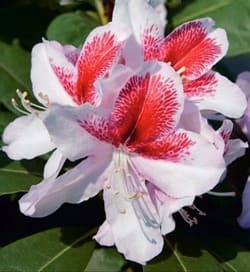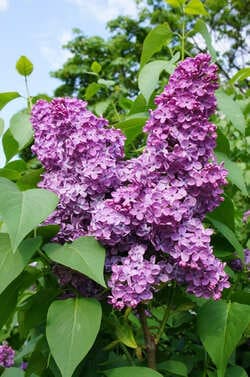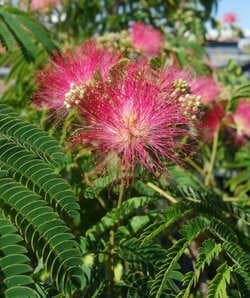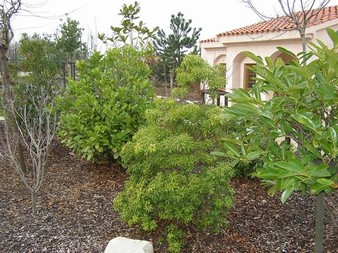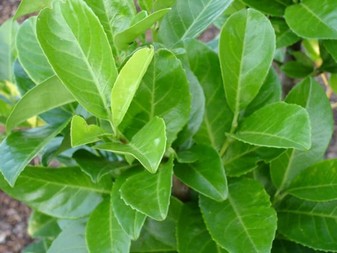 How it works
How it works
Every plant can protect itself a little differently. Most have glossy leaves that reflect the sun's rays to reduce evaporation. Some have miniature hairs for the same purpose. Magnolia grandiflora, for example, has the underside of the leaf covered with such a thick layer of hairs that it gives the impression of suede. And when the wind blows, the natural green side of the leaf hides and sets the reverse side as a shield. In general, then, the alpha omega of success is to ensure a supply of water, especially to the roots, even on cold and frosty days, because we have no other way of imitating the high humidity of their home. The leaves evaporate quite a lot of water even during the winter, although the amount of sap is less. Therefore, we prefer to plant these plants in places where we can minimise wind drying. The plants will grow in a windy location, but the drying of the leaves and thus the thawing of last year's plants will be greater and the plant will grow more slowly.
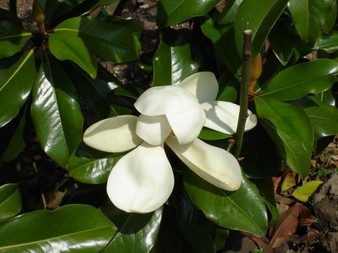 They are hardy
They are hardy
The first step towards the goal was to put together an assortment of plants that botanically have the prerequisites for successful growth and survival of freezing winters. But the more important thing was to select species, and especially specimens, that are truly adaptable and not just survive, but grow and mature. So, we offer shrubs and trees that can handle our winters if the label guidelines are followed and therefore we give a 100% guarantee on them to survive normal frosts. It should be pointed out at this point that, as gardeners know, nature is more powerful than any precautions, and sudden temperature reversals, especially in spring, and large amounts of rainfall all at once, as we have seen in recent years, can mean the loss of even perfectly trouble-free native species.
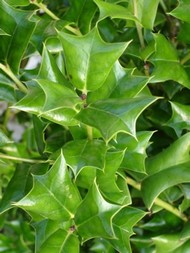 How to deal with this
How to deal with this
Each plant here has its own card and if you buy it directly from our garden shop, it will also have a label with a Czech description and instructions. Often these are lime-tolerant plants, i.e. they do not tolerate calcareous soils. In this case, mix your soil with peat. Peat alone does not hold much water, which these shrubs need so much, so a good garden soil is also necessary. As nutritious as your soil is, so will your plant grow. But be warned against using too much fertiliser - the local climate will not allow a plant with unreasonably long summer growth to mature in the wood during the growing season, and the result in spring may be worse rather than better. If you feel that your soil really needs fertilizing, do so only in the spring and only in a really "reasonable" way. If you have the opportunity, plant these plants in partial shade or in a location where they cannot be scorched by the harsh morning sun in spring. If you deliberately want to place the plant in a sunny location, allow for the possibility of scorched leaves in the upper layer of the habit. In late spring, these are easily sheared off and the plant will make new ones.
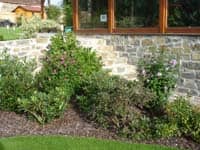 We advise mulching
We advise mulching
These plants need water constantly. Mulching with a combination of black non-woven fabric and a layer of bark mulch has worked very well for us. This has several advantages at once:Mulching
- the mulch keeps the moisture in even on hot summer days
- the fabric maintains a balanced soil temperature without dangerous fluctuations, especially in spring and autumn
- the ground does not freeze as deeply in winter and freezes later
- the combination of fabric and a top dressing of bark for decoration is much cheaper than a conventional bark-only mulch, which must be 7-10 cm high even in summer to ensure its function
- the fabric prevents weed growth
- And finally: it looks very impressive - the rich green leaves stand out perfectly against the brown mosaic of the bark spread.
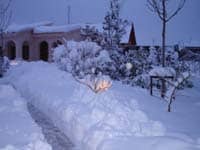 When nature attacks
When nature attacks
The winter of 2005/2006 surprised us with a lot of snow at once in January, and that didn't sit well with road workers, gardeners and foresters alike. The conifers and some deciduous deciduous trees were snapping like toothpicks under the weight of the heavy, wet snow, and we just looked on sadly at the excesses we couldn't help. Evergreen deciduous trees suffered too, of course, but although they are not used to such avalanches, they have a very effective defence: flexible branches. Magnolia grandiflora, photinia x fraserii, as well as prunus laurocerasus had branches bent to the ground, but unless a careless human hand touched them, not a single one broke. If it snows heavily and these shrubs and trees naturally hold the snow on their  leaves, it's worth shaking the snow off gently if possible. However, once the snow starts to freeze on the leaves and cannot be shaken off easily, leave them alone and trust that they will do fine. We can easily bend the branch too much and destroy it. On the other hand, for small plants, a good helping of snow is a blessing, especially in the bitter cold of January and February. Such a blanket of snow protects not only the young and immature wood from frost, but also the ground, which does not freeze as much. And as we have already written, it is the evergreen beauties that need to draw water from their roots even in winter.
leaves, it's worth shaking the snow off gently if possible. However, once the snow starts to freeze on the leaves and cannot be shaken off easily, leave them alone and trust that they will do fine. We can easily bend the branch too much and destroy it. On the other hand, for small plants, a good helping of snow is a blessing, especially in the bitter cold of January and February. Such a blanket of snow protects not only the young and immature wood from frost, but also the ground, which does not freeze as much. And as we have already written, it is the evergreen beauties that need to draw water from their roots even in winter.












